1
Patient history

Clinical situation
Diagnosis of the neurological impairment
Cerebral palsy is the most common cause of motor disability in children. The surveillance of cerebral palsy in Europe reflects that it occurs in approximately 2 out of 1,000 live births.
Cerebral palsy and undernutrition
The actual prevalence of undernutrition and failure to thrive in these children is unknown but according to studies undernutrition has been documented in 29% to 46% of children with cerebral palsy.1
Clinical history
- Other medical conditions.
- Diseases associated with their clinical condition (Gastro-oesophageal reflux disease [GORD], dysphagia, constipation, recurrent respiratory infections, convulsions, skeletal interventions and bone fractures).2
- Number of hospital admissions.
Degree of mental retardation
DSM-IV-TR (Diagnostic and Statistical Manual of Mental Disorders, Fourth Edition, Text Revision)
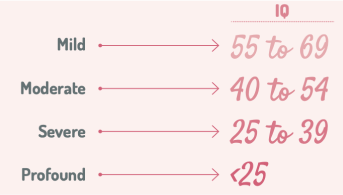
The majority of children with CP have mental retardation on the mild range. Actual number scores vary +/- 5 points.3
Degree of motor impairment4
GMFCS E&R levels between 6th - 12th birthday
DSM-IV-TR (Diagnostic and Statistical Manual of Mental Disorders, Fourth Edition, Text Revision)
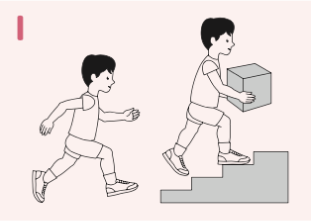
Children walk at home, school, outdoors and in the community. They can climb stairs without the use of a railing. Children perform gross motor skills such as running and jumping, but speed, balance and coordination are limited.
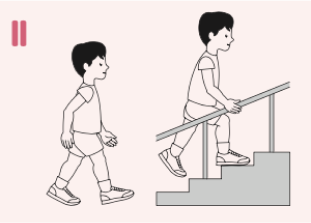
Children walk in most settings and climb stairs holding onto a railing. They may experience difficulty walking long distances and balancing on uneven terrain, inclines, in crowded areas or confined spaces. Children may walk with physical assistance, a hand-held mobility device or used wheeled mobility over long distances. Children have only minimal ability to perform gross motor skills such as running and jumping.
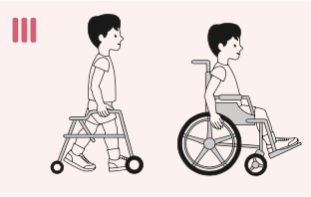
Children walk using a hand-held mobility device in most indoor settings. They may climb stairs holding onto a railing with supervision or assistance. Children use wheeled mobility when traveling long distances and may self- propel for shorter distances.
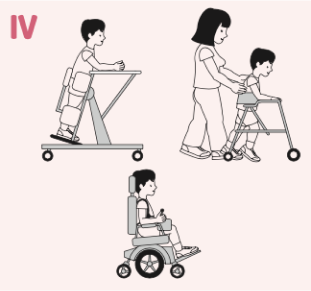
Children use methods of mobility that require physical assistance or powered mobility in most settings. They may walk for short distances at home with physical assistance or use powered mobility or a body support walker when positioned. At school, outdoors and in the community children are transported in a manual wheelchair or use powered mobility.
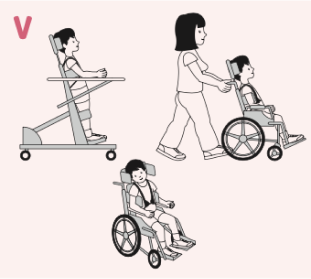
Children walk using a hand-held mobility device in most indoor settings. They may climb stairs holding onto a railing with supervision or assistance. Children use wheeled mobility when traveling long distances and may self- propel for shorter distances.
Dietary assessment
Dietary history
Intake assessment (3-day dietary survey)
How to assess the intake?
Nutritional intake (considering regular food and any nutritional support) needs to be assessed in order to determine if it’s appropriate to the child’s needs. This assessment must also take into account the intake in terms of the different food groups.
Feeding problems:
- Attitude towards food (stressful versus pleasant).
- Time invested in each meal (over 30 min) and who supplies the food.
- Need to modify texture.
- Presence of signs of choking, coughing, facial redness, unexplained crying and irritability, apnea, eating behavioral disorders.5
Other problems:
- Frequent respiratory complications, including respiratory infections.
Development indicators
Weight
Height/Length
Head circumference
Development follow-up
It is important to have serial measurements of weight and height/length prior to the consultation to detect changes in growth patterns.
